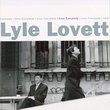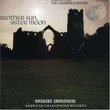| All Artists: Francis Poulenc, Orchestre de la Cité, Michel Piquemal, Danielle Borst, Eric Lebrun, Marc Vieillefon, Choeur Régional Vittoria d'Ile-de-France Title: Poulenc: Stabat Mater - Gloria / Borst, Piquemal Members Wishing: 0 Total Copies: 0 Label: Naxos Original Release Date: 1/1/1994 Re-Release Date: 11/19/1996 Genre: Classical Style: Opera & Classical Vocal Number of Discs: 1 SwapaCD Credits: 1 UPC: 730099417624 |
Search - Francis Poulenc, Orchestre de la Cité, Michel Piquemal :: Poulenc: Stabat Mater - Gloria / Borst, Piquemal
 | Francis Poulenc, Orchestre de la Cité, Michel Piquemal Poulenc: Stabat Mater - Gloria / Borst, Piquemal Genre: Classical
|
CD DetailsSimilar CDsSimilarly Requested CDs
|
CD ReviewsPoulenc's Sacred Masterpieces Michael | Washington, D.C. area | 04/13/2005 (5 out of 5 stars) ""The Janus-faced composer" - that's how Francis Poulenc described himself. Contradiction permeated Poulenc, both the man and his music. He was at once a devout Catholic and a Parisian bon vivant, "part monk, part guttersnipe" (Claude Rostand's words). As a composer he is at once an unsentimental, objective neoclassicist (a la Stravinsky, whose stoic monumentality looms over the STABAT MATER), and a misty chromaticist in the French tradition; one part is hard steel, the other pastel-colored. It is with this paradoxical style that Poulenc crafted some of the most devout, strikingly original religious music of the 20th century. Both the STABAT MATER (1950) and the GLORIA (1959) are among Poulenc's masterpieces. The former is more dramatic, consisting of a number of short movements for the most part alternating slow and fast. Jubilant and succinct, the GLORIA is one of the 20th century's most popular choral works. LITANIES A LA VIERGE NOIRE dates from the onset of Poulenc's religious conversion and is a typically heartfelt and intensely prayerful work for women's chorus and organ (it also exists in a version with orchestral accompaniment). For me, the ideal recording of the STABAT and the GLORIA is the one on Deutsche Grammophon with Seiji Osawa leading the Tanglewood Festival Chorus and Boston Symphony. But these works are well served by a chorus which lends proper French diction to the Latin. (Poulenc heard Latin in a distinctively French way, resulting in accentuation such as "in EX-cel-SIS De-O"). The acousitc is spacious and churchy rather than "concert-hall" (it was recorded in a Paris church) and the orchestral playing is notable for some strong brass contributions. There are other recordings of these Poulenc works to consider; but given the idiomatic performances you get here for such a low price, this is well worth your consideration." Poignant versions of these splendid works G.D. | Norway | 05/31/2009 (4 out of 5 stars) "Poulenc in serious mood is still recognizably Poulenc, but the sense of poignant anguish in such works as the Stabat Mater creates an atmosphere not quite like anything else. The Litanies à la Vierge Noire, for three-part female chorus and organ, was composed in 1936, the composition being partially influenced by the news of the death of the composer Pierre-Octave Ferroud. It is a hauntingly solemn and beautiful piece and given rather impressive advocacy here. Still, the main item is the masterpiece Stabat Mater for a grand chorus and a large orchestra - although the latter is mostly used with restraint. Stylistically, there is something of the French Grand Motet (e.g. Lully) about the work; a grave and austere work in twelve movements formally centered on the sixth, Vidit suum (where the solo soprano appears for the first time). And Poulenc's skilfull and inventive use of harmony and modulatory techniques, and his masterly writing for the voice, is marvelously applied throughout.
The jubilatory Gloria is more neo-classical in feel, even a little jaunty at times and redolent of Stravinsky (obviously so in the opening fanfare), yet it is at its best in the Domine Deus section, with the haunting writing for solo soprano, and the Amen, which quietly and poignantly fades out. The performances on this Naxos release are idiomatic and generally very impressive (if not outclassing the alternatives in the catalogue). The sound is a little too cavernous, but no one will go seriously wrong with these versions; safely recommended." |

 Track Listings (19) - Disc #1
Track Listings (19) - Disc #1











